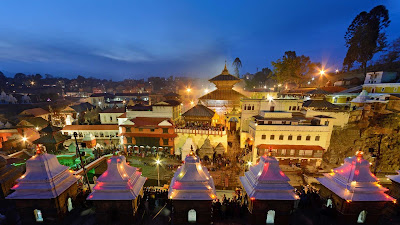Lumbini :The Birthplace of the Lord Buddha
Province :Province No. five
District :Rupandehi
Municipality :Lumbini Sanskritik
Area covered :one hundred fifty m (490 feet)
History
Lumbinī is a Buddhist pilgrimage website inside the Rupandehi District of Province No. five in Nepal. it's miles the place wherein, consistent with Buddhist culture, Queen Mayadevi gave birth to Siddhartha Gautama in 563 BCE. Gautama, who achieved Enlightenment a while round 528 BCE,have become the Buddha and founded Buddhism.Lumbini is considered one of many magnets for pilgrimage that sprang up in places pivotal to the life of the Buddha.
Lumbini has some of temples, together with the Mayadevi Temple and several others which might be still below restore. Many monuments, monasteries and a museum, the Lumbini global research Institute, also are in the holy web site. also there may be the Puskarini, or Holy Pond, in which the Buddha's mom took the ritual dip prior to his birth and in which he had his first tub. At other websites near Lumbini, in advance Buddhas had been, in line with lifestyle, born, then achieved remaining Enlightenment and sooner or later relinquished their earthly paperwork.
Ashoka Piller
In 1896, General Khadga Samsher Rana and Alois Anton Führer found an awesome stone column at Rummindei, as per the urgent chronicled records made by the old Chinese priest pioneer Xuanzang in the seventh century CE and by another old Chinese priest traveler Faxian in the mid fifth century CE. The Brahmi engraving on the column gives proof that Ashoka, head of the Maurya Empire, visited the place in third century BCE and distinguished it as the origination of the Buddha.
When King Devanampriya Priyadarsin had been blessed twenty years, he came himself and adored in light of the fact that the Buddha Shakyamuni was conceived here. Both caused to be made a stone bearing a steed and made a stone column be set up, (with the end goal to appear) that the Blessed One was conceived here. He made the town of Lummini free of assessments, and paying (just) an eighth offer of the deliver.
At the highest point of the column, there is a second engraving by lord Ripumalla (13-fourteenth century CE), who is additionally known from an engraving at the Nigali Sagar column:
"Om mani padme murmur May Prince Ripu Malla be long triumphant"
— Inscription of King Ripumalla on the Lumbini mainstay of Ashoka, (13-fourteenth century).
Maya devi Temple
- As indicated by Robin Coningham, unearthings underneath existing block structures at the Mayadevi Temple at Lumbini give proof to a more established timber structure underneath the dividers of a block Buddhist hallowed place worked amid the Ashokan period (third century BCE).
- The format of the Ashokan holy place nearly pursues that of the prior timber structure, which proposes a congruity of love at the site. The pre-Mauryan timber structure seems, by all accounts, to be an old tree holy place.
- Radiocarbon dating of charcoal from the wooden postholes and optically fortified iridescence dating of components in the dirt recommends human action started at Lumbini around 1000 BCE.
The site, states Coningham, might be a Buddhist landmark from sixth century BCE. Different researchers express that the unearthings uncovered nothing that is Buddhist, and they just affirm that the site originates before the Buddha.














































